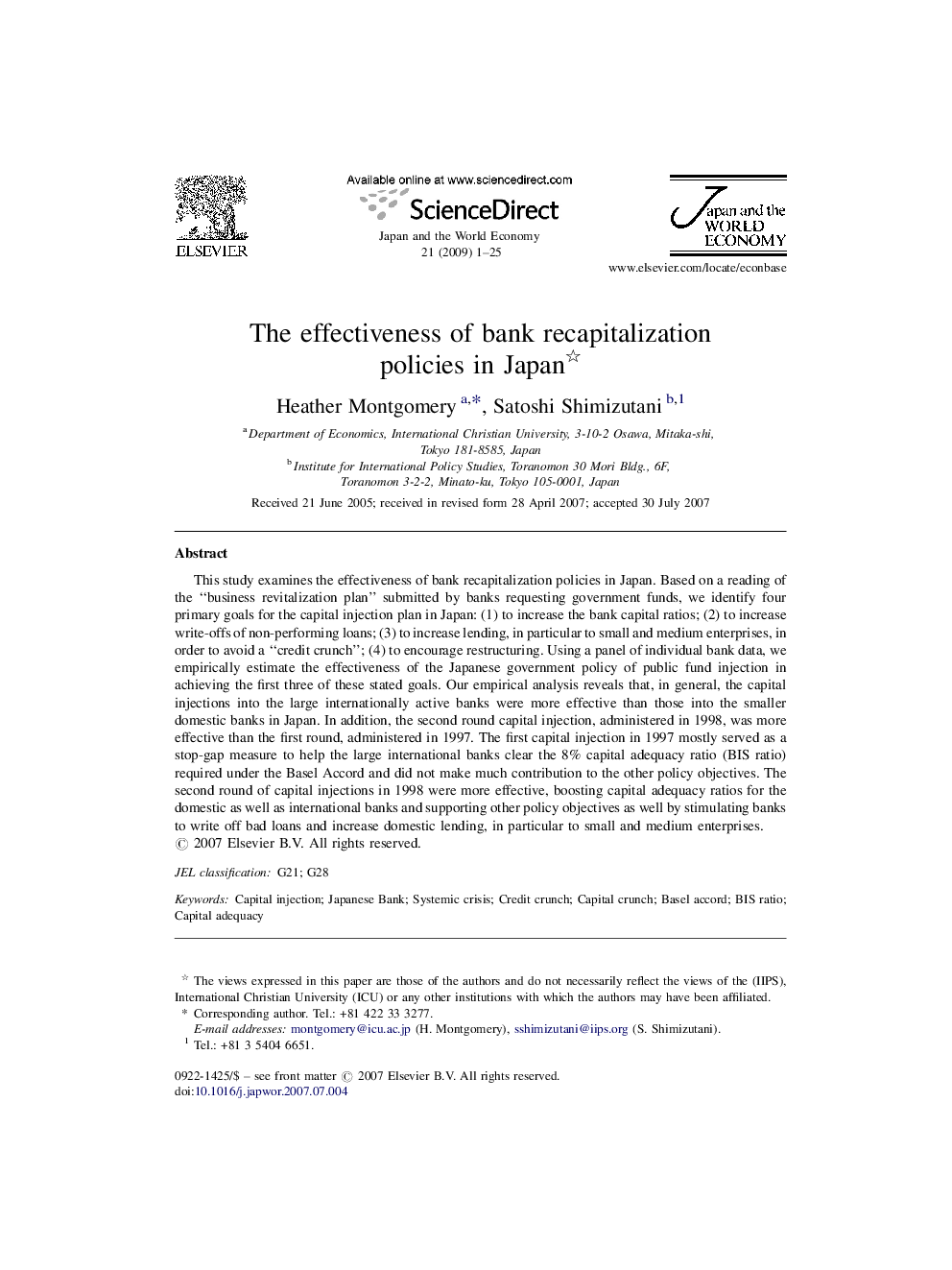| Article ID | Journal | Published Year | Pages | File Type |
|---|---|---|---|---|
| 5086338 | Japan and the World Economy | 2009 | 25 Pages |
Abstract
This study examines the effectiveness of bank recapitalization policies in Japan. Based on a reading of the “business revitalization plan” submitted by banks requesting government funds, we identify four primary goals for the capital injection plan in Japan: (1) to increase the bank capital ratios; (2) to increase write-offs of non-performing loans; (3) to increase lending, in particular to small and medium enterprises, in order to avoid a “credit crunch”; (4) to encourage restructuring. Using a panel of individual bank data, we empirically estimate the effectiveness of the Japanese government policy of public fund injection in achieving the first three of these stated goals. Our empirical analysis reveals that, in general, the capital injections into the large internationally active banks were more effective than those into the smaller domestic banks in Japan. In addition, the second round capital injection, administered in 1998, was more effective than the first round, administered in 1997. The first capital injection in 1997 mostly served as a stop-gap measure to help the large international banks clear the 8% capital adequacy ratio (BIS ratio) required under the Basel Accord and did not make much contribution to the other policy objectives. The second round of capital injections in 1998 were more effective, boosting capital adequacy ratios for the domestic as well as international banks and supporting other policy objectives as well by stimulating banks to write off bad loans and increase domestic lending, in particular to small and medium enterprises.
Keywords
Related Topics
Social Sciences and Humanities
Economics, Econometrics and Finance
Economics and Econometrics
Authors
Heather Montgomery, Satoshi Shimizutani,
